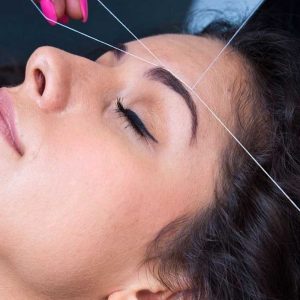Cultural Importance of Brow Shaping: A Detailed Examination at Cultural Practices
Eyebrow threading, an ancient beauty technique with roots in ancient cultures, has gained popularity in recent years as a popular method for achieving well-defined eyebrows. This art form involves using a fine thread to lift and remove hair from the follicle, resulting in clean lines and precise shaping. While many people are drawn to eyebrow threading for its efficacy and the low discomfort it poses, the practice carries a rich cultural significance that goes beyond mere aesthetics.
Originating in countries such as the Indian subcontinent, Persia, and the Arab world, threading has been a historical hair removal method for centuries. It embodies not just a standard of beauty but also a shared cultural identity, passed down through generations. As more people become aware of its benefits and embrace it in different regions of the world, eyebrow threading serves as a bridge connecting individuals to their heritage while allowing for self-expression in their beauty routines. In this piece, we will delve into the cultural significance of eyebrow threading and celebrate its enduring charm in today's society.
Cultural Origins of Eyebrow Threading
Eyebrow threading is thought to have started in the Middle East and Southern Asia, with roots tracing back over a thousand years. Ancient practices in these regions saw women using threads to form their brows, a method that was frequently passed down through ages. This tradition was not only about aesthetics but also symbolized a type of societal identity, demonstrating the skill and expertise of practitioners who mastered the art.
As this tradition spread, it developed into a community tradition, typically performed in salons and houses where ladies gathered to meet. In India, for instance, threading became a significant aspect of bridal rituals, with brides receiving extra attention to their brows before the ceremony. The method was regarded as a means to enhance aesthetics and groom the face, aligning with cultural standards of womanhood.
In recent decades, eyebrow threading gained international recognition, particularly in Westernized countries, as a gentle and accurate alternative to different hair removal methods. This spread of the technique saw it being embraced by varied communities, highlighting the beauty of cultural exchange while retaining its heritage importance. Today, threading symbolizes greater than just a cosmetic treatment; it represents the deep histories and customs from which it originated.

Cultural Practices and Significance
Eyebrow threading is deeply anchored in the cultural traditions of diverse regions, especially in South Asia and the Arab world. Traditionally, this technique of hair removal is thought to have originated in historic India, where it was employed not only for aesthetic purposes but also as a ceremonial activity. Families often pass down the art through generations, making it a treasured art form that embodies cultural identity. The significance of eyebrow threading extends beyond aesthetics, signifying a link to heritage and communal identity.
In many societies, eyebrow threading is intricately linked to femininity and social status. Women often partake in this practice as a means of preparation for significant life events, such as weddings or celebrations. The process itself typically requires a skilled practitioner, known for their precision and artistry, creating a calming and respectful atmosphere. This joint experience fosters a sense of community, where women come together to share stories and encourage one another while participating in self-care.
Furthermore, eyebrow threading is progressively recognized in contemporary beauty standards worldwide, transcending its cultural origins. Its rise in fame has led to a fusion of cultural methods with modern beauty standards. This mix showcases an evolving appreciation for diverse beauty practices and emphasizes the importance of maintaining cultural traditions in a globalized context. As eyebrow threading becomes more mainstream, it continues to honor its deep roots while adapting to the changing landscape of beauty practices.
Contemporary Variations and Movements
In recent years, eyebrow threading has experienced a revival in fame, especially among younger-aged generations who desire organic and precise grooming methods. Salons focusing in threading often combine traditional techniques with modern styles to create a friendly atmosphere that attracts to a varied clientele. The rise of social media has also played a significant role in popularizing eyebrow threading, with beauty influencers showcasing the art of threading and its advantages through guides and transformation images. jyotisalon.com has fueled interest, transforming eyebrow threading into a sought-after beauty ritual.
Additionally, many beauty establishments are innovating by offering threading as part of a wider range of beauty services. This change reflects a growing understanding of the significance of maintaining a cohesive beauty routine. Clients can now experience threading alongside services such as facials, waxing, and skincare appointments, creating a well-rounded experience that enhances personal care. Moreover, mobile beauty services have emerged, allowing professionals to deliver threading directly to clients at home or in convenient places, which highlights the flexibility and availability of this classic practice.
Energy around sustainability and green practices has also influenced the eyebrow threading industry. More salons are utilizing organic threads and environmentally friendly products to align with consumers' growing concerns about health and the environment. This trend not only encourages a more conscientious approach to beauty but also resonates with those who value responsible practices in the beauty industry. As eyebrow threading continues to change, it weaves modern values with its rich cultural roots, securing its place in contemporary beauty culture.